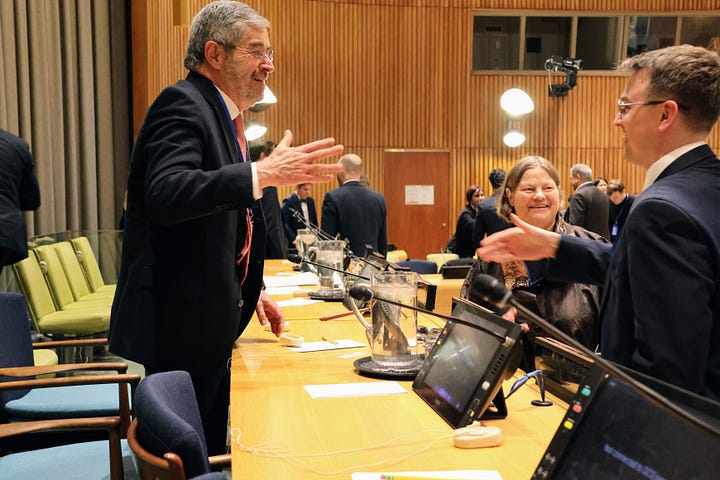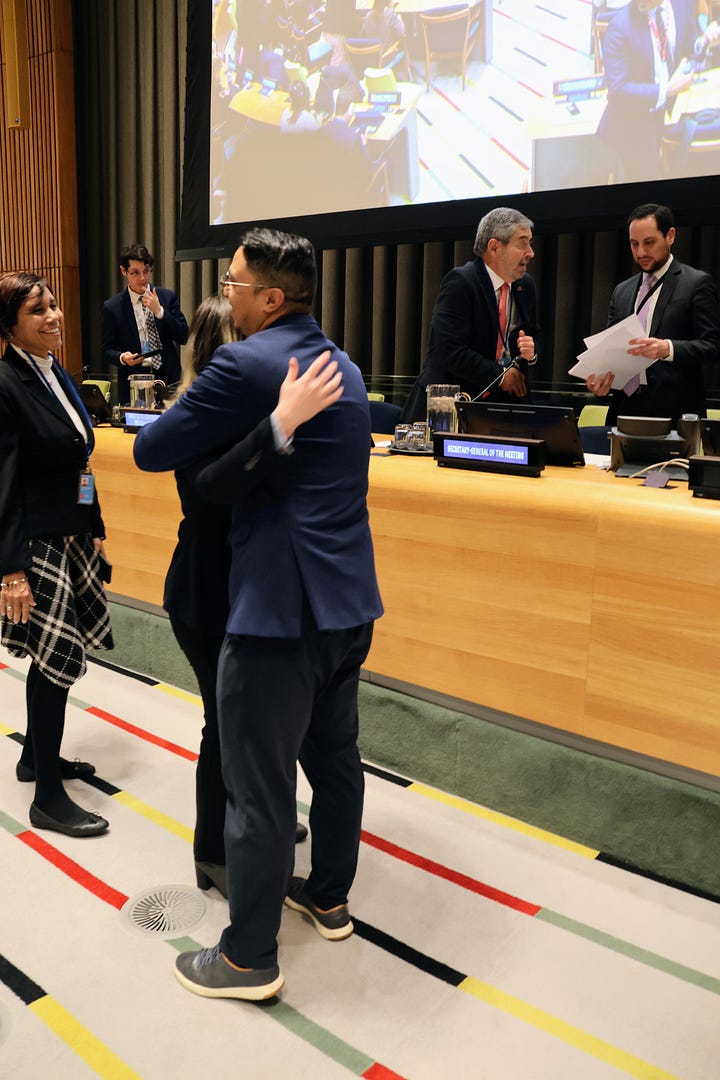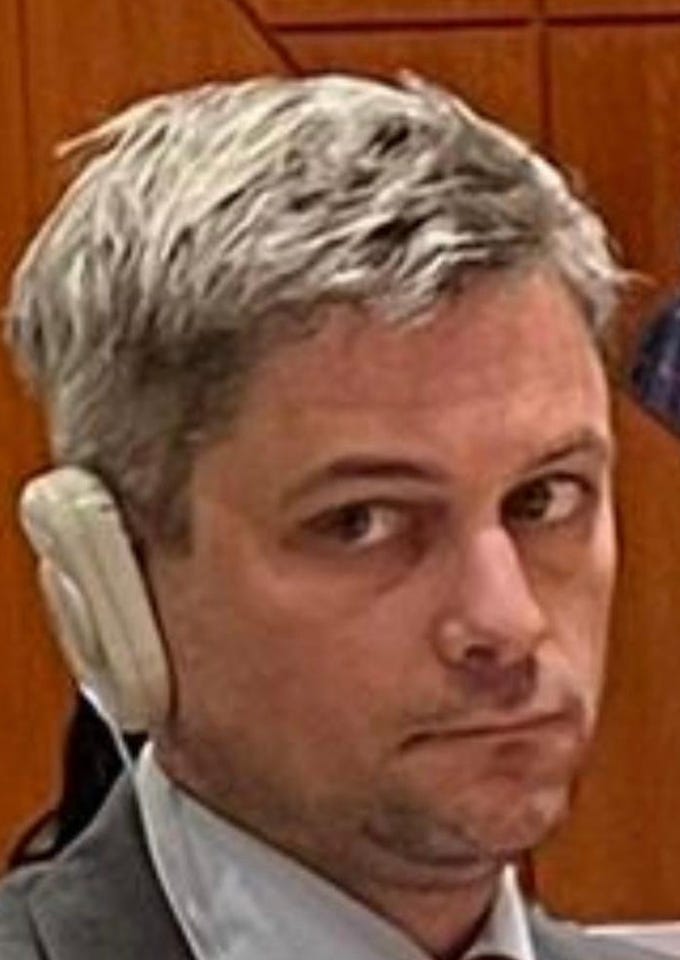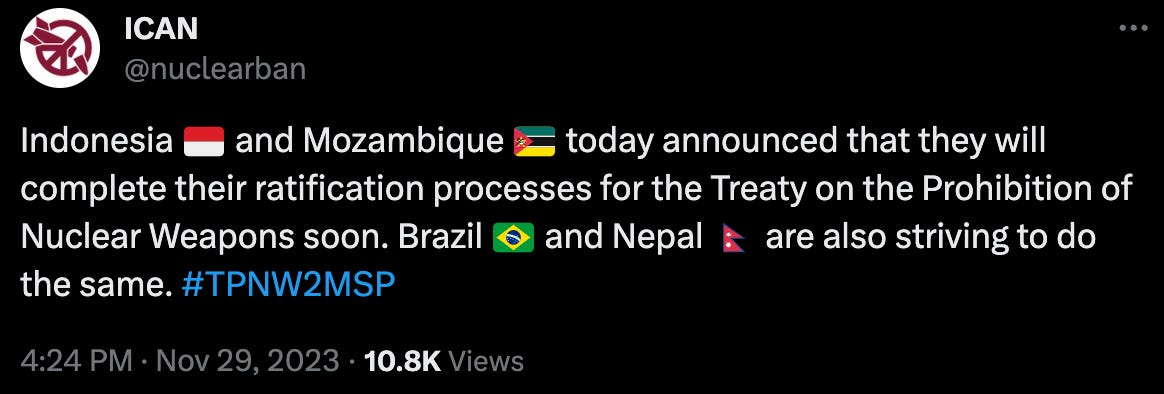Nuclear ban treaty members plan frontal attack on nuclear deterrence theory
The second meeting of states to the nuclear ban treaty concluded with a bold plan to challenge nuclear-armed nations’ rationale, but was less decisive on trust fund for nuclear testing survivors.

The States Parties to the nuclear ban treaty indicated the gloves are coming off in their battle with NATO’s nuclear alliance, other nuclear-armed states, and Belarus where Russia recently deployed the banned weapons.
“We…will not stand by as spectators”
The 69 nations who are members to the treaty (59 participated in New York along with 35 observer states), jointly declared, “We…will not stand by as spectators to increasing nuclear risks and the dangerous perpetuation of nuclear deterrence.”
The UN gathering was the second Meeting of States Parties to the Treaty on the Prohibition of Nuclear Weapons, following the first, which occurred in Vienna in June of last year following a COVID-delay.
The members tasked the treaty’s Scientific Advisory Group, ICRC, ICAN and other stakeholders with submitting a report to the third Meeting of States Parties with “comprehensive arguments” against nuclear deterrence theory. That meeting will take place in March of 2025 in New York.
Here are a few observations as 2MSP draws to a close.


States agreed muddled language on a Trust Fund, but most states quietly confident
The outcome document is less than decisive on the timing of the establishment of an international trust fund for environmental remediation and victims assistance for those affected by nuclear weapons testing.
Conversations with delegates throughout the week revealed a commitment to create the fund, and informally, most believe it will be launched at 3MSP. A leading figure in the negotiations told Spoiler Alert they are “confident” it will be achieved. However, swirling disagreements around how the fund will work led to an awkward language fudge.
The text acknowledges work completed on the “feasibility” and “possible guidelines” for such a fund, but at no point actually says the trust fund is desirable, nor does it guarantee it will be created by the end of 3MSP. Instead, states agreed on a flimsy commitment to merely consider the recommendation to create a fund with “the aim of examining the establishment” of the fund at 3MSP. Somewhat jarringly, this indecisive pledge is to be pursued “as a priority”. Talk about blowing hot and cold!
The muddle belies sharp divisions around whether the future trust fund should be opened up for non-states parties to contribute to. For example, South Africa consistently argued that it should not be opened up, lest non-state parties exert undue control over the fund, or use their contributions to blunt calls they formally join the treaty.
Other states are concerned that such an approach would be unworkable since major funds need to be mobilized if the programme is to be effective, and the TPNW does not count traditional major donor countries in its ranks. Looking forward, another debate is whether states will look at opportunities presented by alternative funding sources to contribute to the implementation of the TPNW, such as tapping into the joint Financing for Development fund.
Affected communities were at the heart of 2MSP and will spearhead implementation
Commenting on the vital participation of affected communities, Daniel Högsta, ICAN’s Deputy Director, said, “By courageously sharing their testimonies, they have reminded us all why we are here,” to rapturous applause.
Throughout the week, first-generation survivors and their descendants were at the centre of proceedings. A joint statement endorsed by 26 nuclear-affected community-led organisations, and supported by a further 45 allied organisations said “We have the right and responsibility to speak about what nuclear weapons really do… We call on States Parties to the TPNW to push relentlessly for its universalisation.”
As with most UN meetings, the meeting was not accessible to all. Issues with ODA’s sponsorship programme meant that not all Pacific communities who wanted to be present could attend, resulting in decreased diversity and representation. Some of those who did make it, such as a civil society delegation from Kiribati, were only able to access their subsistence funding on the final day of the week-long meeting. Lessons will need to be learned in time for 3MSP.
Hotly contested focus on nuclear hosting
The language on nuclear hosting was the subject of intense debate and settled on the following: “We are disturbed by any placement of nuclear weapons on the territory of non-nuclear-armed States”.
Despite the somewhat flimsy wording, the line is seen as a critique of Russia’s move to transfer weapons to Belarus, but also of European states that host US nuclear weapons, two of whom were in the room as an observer: Germany and Belgium. No doubt, without Ireland, Austria, and other close allies in the room, the rebuke would have been much sharper.
The practice of nuclear sharing was the topic of intense backroom discussions throughout the week and continues to be a battleground as the treaty’s advocates push for its universalization.
The TPNW prohibits receiving the transfer of, or control over, nuclear weapons or allowing their stationing, installation, or deployment. However, western parties to the nuclear ban treaty, including Austria and Ireland, have been fighting since the treaty was being negotiated to keep the door open for future accession by nuclear-allied countries.
The only game in town?
“Ray of hope in an otherwise bleak landscape.”
The TPNW is currently the only nuclear disarmament treaty growing in adoption in a year where nuclear-armed states are upgrading their nuclear arsenals, making nuclear threats, and rejecting existing treaties. The U.S. announced a new nuclear gravity bomb today. Russia terminated its membership in the Comprehensive Nuclear-Test-Ban-Treaty last month.
Conversely, the nuclear ban has seen 69 states join since 2017, with several in the process of ratifying the treaty. ICAN’s Högsta called the TPNW a, “Ray of hope in an otherwise bleak landscape.”
The meeting’s president, Mexican Ambassador de la Fuente, closed the meeting noting, “... it is increasingly clear that the TPNW is the most fitting multilateral instrument we have available to achieve the total elimination of nuclear weapons."





